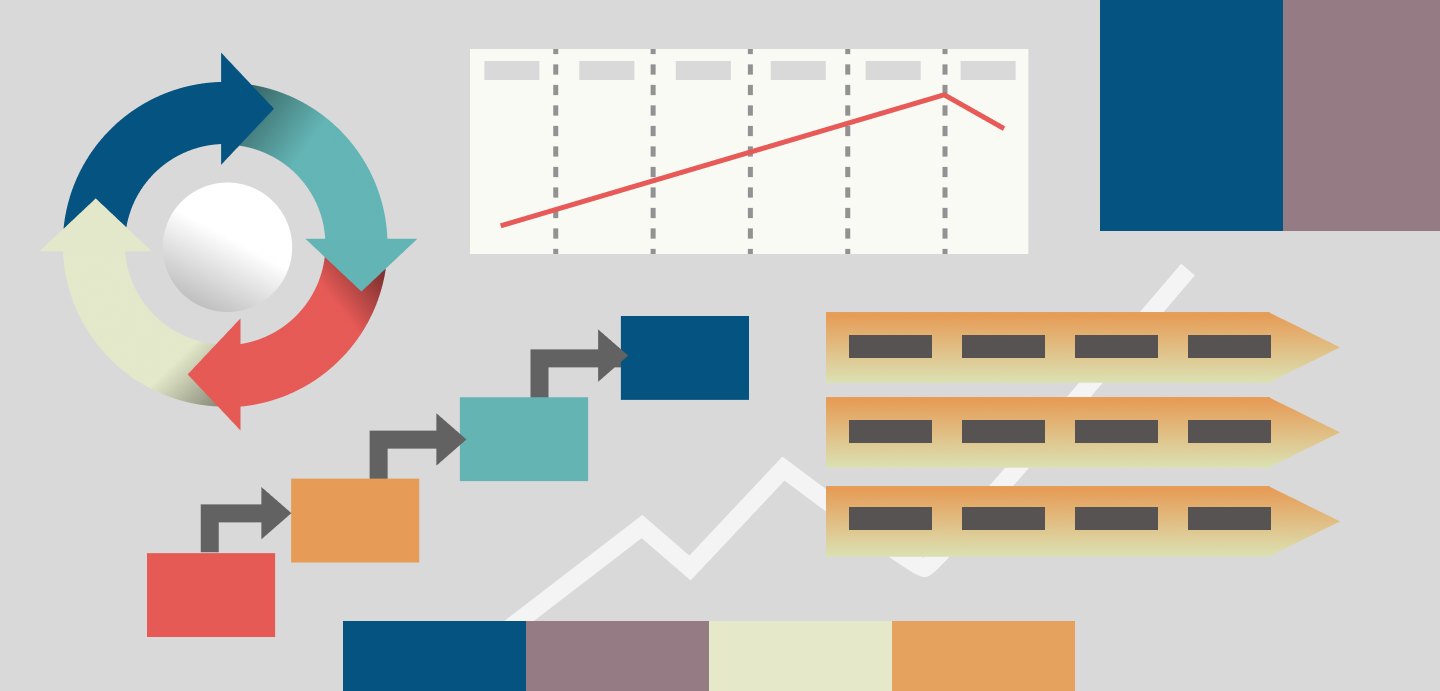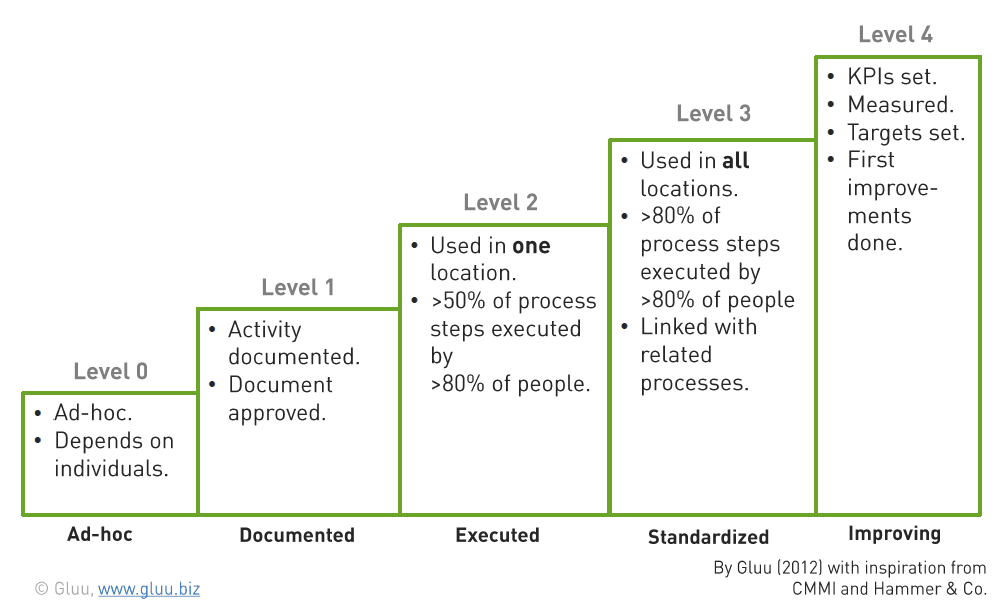
How to assess the process maturity of your business

The concept of process maturity originally come from the software and IT area. This means that they’re heavily focused on documentation and automation. So how do you assess your company’s process maturity from a people perspective? That is the topic of this post.
Why You Should Look at Process Maturity
Modern organisations embrace the concept of the “process driven company”. They want to grow, scale, deliver consistently and become less dependent on individuals and processes represent the way to get there.
A process maturity tool offers a way to understand how far you have come on this journey and where to go next. This makes the concept very useful as a guide.
Some Limitations of Current Process Maturity
We have done some digging on the subject, so let us provide you with a quick overview of “process maturity”. Most experts seem to agree that the concept of Process Maturity was developed in the mid-nineties by the US Department of Defense and the Software Engineering Institute. The Department of Defense wanted to find out which software developers that were most likely to deliver on time and budget. This required an ability to assess the maturity of each organisation. The “Capability Maturity Model” became a spin-off of this work.
By 2003 the model was developed to apply more widely than software alone and to extend to many other business processes than IT. This is today known as the “Capability Maturity Model Integration (CMMI)”. It seems to be the most widely recognised model for assessing an organisation’s process management level. Other well-known models include Michael Hammer’s model for a Process Audit and Gartner’s Process Maturity Tool.
Process Maturity Tools are best suited to high-frequency core processes
In our view, these process maturity tools are very suitable when assessing large organisations that invest heavily to automate high-frequency core processes, such as supply chain. However, when it comes to assessing the maturity of processes with a lot of unstructured and manual steps, then they seem to miss the key variable in the process driven company – people!
It is not enough to assess if processes are documented, controlled and audited. Companies also need to assess if processes are understood and used by the people that execute them. Too often we see examples of extensive process documentation that is being maintained at great cost in a corner of the organisation – without anybody else having any real knowledge of these. Other times we see expensive and extensive process mapping exercises hidden away in PowerPoint presentations. These companies may live up to standards and deliver on audits but are they true examples of process-driven companies? Hardly.
Process Maturity as degree of involvement
To supplement the advanced level of process maturity we propose a much simpler approach to answer the following key questions:
- Do we have a common language for how a given activity is performed? (a core, enabling or governing activity)
- Can we draw a common visual representation on how we collaborate on it? (check out our simple process mapping guide. )
- What proportion of our people work in this way?
- How do we keep it alive and present so we keep improving it?
With these questions in mind we propose this simple process maturity tool for smaller organisations or business units within larger enterprises:

Perspectives
This model leaves out a lot of assessment criteria – that’s the purpose. However, it may indicate your progress towards becoming a process driven company. Smaller organisations may not need anything else than this – just thinking of process maturity is advanced for many management teams. Large organisations could probably use it for many of its cross-functional, end-to-end processes since these are heavily dependent on collaboration and real adoption by people.
And the last point: It does require new tools for process communications and collaboration. It also requires a method for observing people’s actual behaviour that goes beyond sending questionnaires. To support your journey in improving process maturity and selecting tools to manage and optimize your processes, explore our BPM Software Selection Guide.
Frequently Asked Questions
The maturity of a business process is largely determined by a few crucial elements. These include the clarity of the process goals, its repeatability, whether it is clearly defined, managed efficiently, and optimized for continual improvement.
The Capability Maturity Model Integration (CMMI) model is used to gauge process maturity. It helps identify the strengths and weaknesses of an organization’s processes using a scale of 1 to 5, with 1 being the lowest and 5 being the highest level of maturity.
Improvement in process maturity involves strategic planning and actionable measures. It is achieved by understanding the current state, identifying improvement areas, planning, implementing changes, and monitoring progress regularly.



